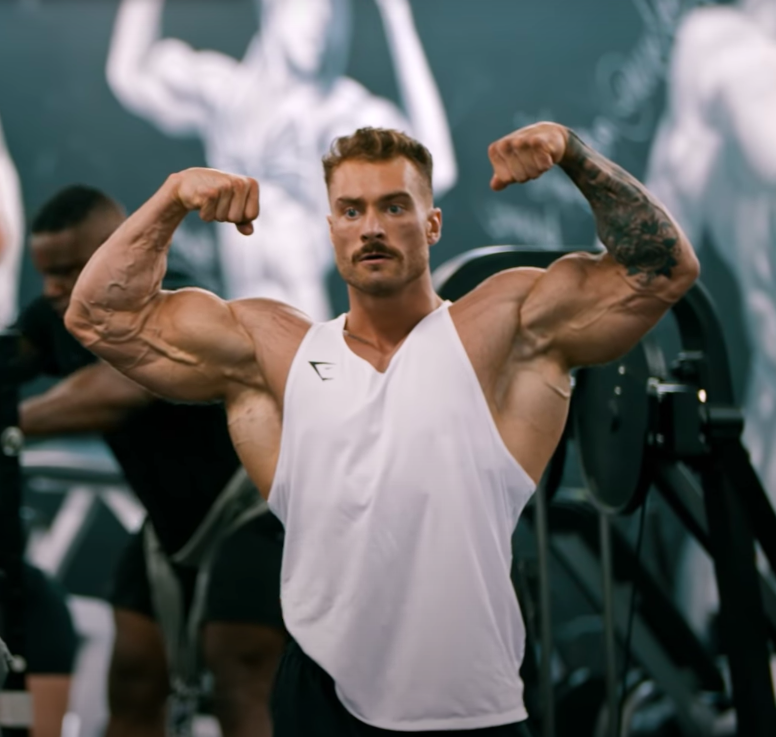As time goes on, people are becoming more reliant on the internet and social media. So it’s no surprise that companies are jumping on the bandwagon and hiring famous people to represent their brand.
It is no different for the workout industry. When people start to become popular because of their physique or strength, large workout brands recruit them to help promote their brand to their audience.
People who gain acclaim through their online workout content, or “influencers”, are quickly becoming role models for teenagers and younger people. But what happens when these influencers begin to create unrealistic goals and expectations for their audience?
Although there are positives to people showing off their progress, there are also influencers who are using performance-enhancing drugs in order to get an edge over the average person posting pictures on the internet. The influencers are often then sponsored by a brand, like Gymshark or Rogue, so the brand profits off the influencer’s success. Because of this, in the past decade, there has been an increase in steroid use among teens.
TikTok is a place where people share content in order to entertain, persuade and even motivate their audiences. There are times when this motivation and entertainment is positive, yet there are also times when bullying or negative messages come from Tik Tok content creators.
In order to combat this, TikTok often puts up guidelines that do not allow certain tags such as those relating to drugs, suicide or explicit themes. However, the tags “steroid” and “steroid transformation” are still able to be searched.
People are able to post updates on their steroid use, market steroids to others and encourage people to use performance-enhancing drugs. According to a demographic survey done by Backlinko, 47.4% of TikTok’s consumers are aged 10 to 29 years old. This allows younger people to see TikToks that relate to steroid abuse and then possibly be influenced by these videos. Along with TikTok, other large platforms have been a large influence for teenagers.
Athletic retail company Gymshark has many young athletes, aged anywhere from 22 to 30, with picture-perfect bodies on its site. Although Gymshark constantly states that their athletes are completely natural, there is no ignoring that their marketing plea is giving teenagers the impression that if they decide to work out while wearing Gymshark, they, too, will look like these individuals.
One of the athletes, David Laid, posted a YouTube video showing his transformation from ages 14 to 17. In this transformation video, Laid seems to have gained at least 50 pounds of muscle and appears to have grown taller. While Laid claimed his entire transformation was natural, the unrealistic results left viewers uncertain whether or not steroids were involved in his transformation.
Despite his natural claims, his video gave false hopes and expectations for teenagers and their progress through lifting weights. Teenagers might start to notice that anomalies like Laid are being idolized, yet after posting the same workout and transformation videos, they just are not quite hitting the mark.
Some TikTokers are aware of this problem among teens. Noel Deyzel, a prominent influencer on the site, admitted to using anabolic steroids. “I will never disclose what gear I am using because I have a large younger audience. The last thing that I want is for any of them to get hurt because of something I said,” stated Deyzel. “It makes no difference to me whether I say that I am natty or not, but it does to you.”
Lifting weights can be a great way to stay in shape, become stronger or achieve one’s “dream physique.” There are also times when the boundaries of the human body are pushed beyond their limits to the point where there are health risks and damages.
David Baxter, a choir teacher at PVHS and a QC Strongman, commented on the use of steroids in athletics and weightlifting. “There are people, like Hafþór Björnsson, who use steroids in order to become the world’s strongest man. You can’t just be 6’8, 400 lbs of muscle and deadlift over 1,000 pounds just by eating food and lifting weights,” said Baxter.
But the dangers of steroids often times outweigh the benefits. “I myself would advise against it. You don’t need steroids to ‘look good’ or to have enough strength to compete at the high school or collegiate level. Nobody needs that much of an edge to risk their bodies in order to take a drug that they don’t even know that much about,” Baxter added.
There have always been athletes who use steroids in order to increase their performance in their field. In powerlifting competitions, there are multiple different federations where people can compete. In some of those federations, drug tests are required. In others, it is not. This allows people to compete in their sport with the use of performance-enhancing drugs in order to lift the most weight humanly possible. However, using steroids is not a guarantee of success. “It’s not a shortcut, and I think the youth needs to realize that,” said Baxter.
As social media continues to grow, more young influencers are beginning to appear in teenagers’ feeds boasting their physique. Some of these influencers are leaving a positive impact on the youth, yet others are creating unreasonable expectations for the same audience. Over time, maybe steroids will be thought of as something of a necessity in order to keep up with the standards posted on the internet.
In a time where social media is overtaking our society, what will be the new norm for gym influencers in years to come? Will the expectations continue to rise, or will there be newfound awareness for steroid use among teens?










Elsa Gilbeck • Feb 2, 2022 at 12:58 pm
This is a great article! You have so many good points about TikTok as it’s a big marketing platform for brands. I constantly see Gym shark and other workout ads on my for you page. I often question if their body is even real. So many people hate their body because they see these “models” with little to no imperfections. Mr. Baxter has a great point as well!